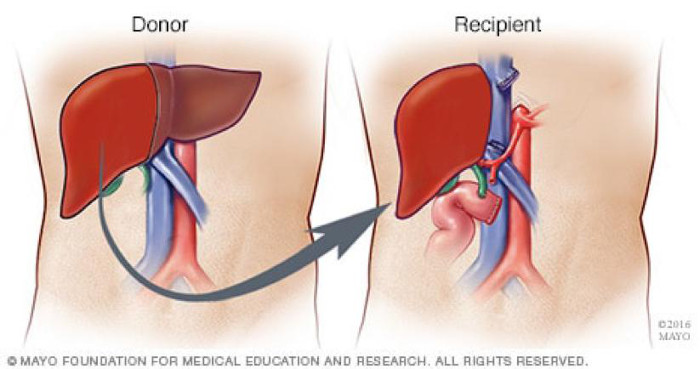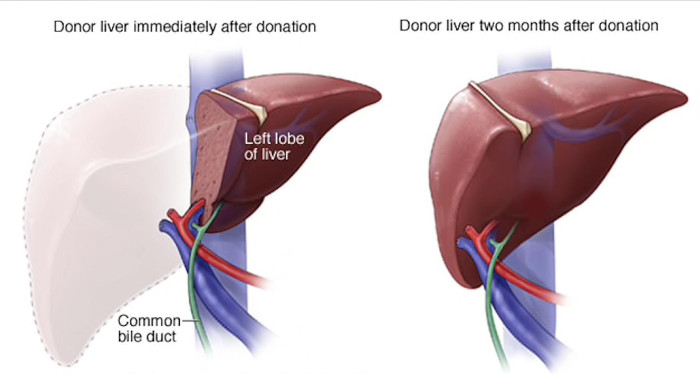What is living liver donation?
During the living liver donation procedure, part of a living person's healthy liver is removed and transplanted into a patient to replace an unhealthy liver. This surgery is possible because the liver has a unique ability to grow back to its original size. We call this the ability to regenerate.
The donor is the person who donates the liver, for example part of the liver. The recipient is the person waiting for a liver transplant.
The waiting time to receive a liver after a donor's death (post-mortem liver transplant) is unpredictable. While waiting for a donor organ, liver disease can worsen and the recipient may even die.
Living liver donation is one of the ways a recipient can receive a liver transplant. This form of donation is planable and can prevent the death of the potential candidate for liver transplantation.
Benefits and risks!
Living donor liver transplantation has several benefits, including:
- the greatest chance of a successful transplant result;
- the possibility of preventive transplantation;
- avoiding a long wait on the waiting list for post-mortem liver transplantation;
- better planning of donation and transplant surgery; because the transplant date is known in advance, the operation can be scheduled at a time convenient for both parties;
- an overall faster recovery and better long-term outcomes, as a healthy part of the liver is transplanted;
- increase in the number of organs available to people on the waiting list.
There are risks associated with every surgery. Our living donor liver transplant team has extensive experience in living donor liver transplantation, reducing and minimizing risk to both donors and recipients. It is rare for a donor to develop a complication that requires further medical or surgical treatment.
Potential Risks Of Living Liver Donation
- Bile leakage – this occurs in a small number of living donors and usually resolves on its own. Sometimes the insertion of a drain into the liver is necessary for recovery.
- Infection - infection of the surgical site occurs in some donors. If this happens, you will be closely monitored by our transplant team to minimize health problems.
- Organ damage or other problems - living liver donation can in very rare cases result in organ damage or failure, other complications or even death of the donor.
How can I learn more about living liver donation?
We understand that it can be a very difficult decision to become an organ donor. Our transplant team supports you every step of the way in the donation process.
We provide you with comprehensive information about:
- the requirements to become a donor;
- the process of living liver donation;
- benefits and risks of living donor liver transplantation;
- Frequently Asked Questions;

